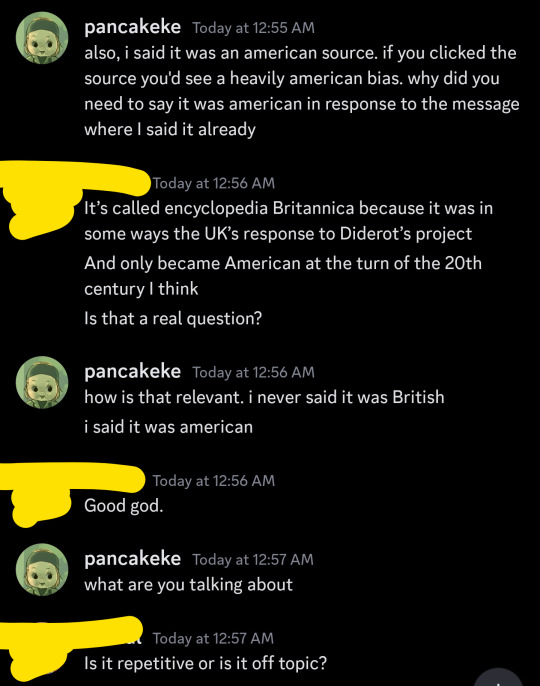#migrant labor law
Explore tagged Tumblr posts
Text
1 note
·
View note
Text
but i take a pretty dim view of the modern conception of citizenship in the first place. anybody should be able to participate politically in the life of the polity they live in and work in and pay taxes in; we tolerate some 200-odd apartheid regimes worldwide because most of them are comparatively soft--it is at least possible under law to be naturalized in the United States, or Mexico, or Canada, or Sweden, and so forth, and many countries also observe various jus soli rules that mean children can become citizens of the place they were born. (the absolute jus soli of the United States is rare, and should be treasured.)
in only a few places like qatar are those regimes not only harder, but taken to an absurd extreme: you can have a country so dependent on "foreigners" that 88% of the country is "foreign"--that it would instantly collapse if everybody there went back to their "home" country!--but which still denies the people its entire economy, its basic infrastructure, is dependent on the right of political participation. there are sections of the economy of some large states dependent on migrant labor (agriculture in many parts of the US is one example), but if every "foreigner" left Qatar or Kuwait or the UAE, it would be a catastrophe on par with the country being nuked. plagues don't kill nine in ten inhabitants of a country, outside science fiction scenarios. this is not citizenship on the modern model; it's not even citizenship on the ancient model, outside of, like, Sparta.
3K notes
·
View notes
Text
I'm serious when I say the United States is actively hostile to children. Constant school shootings our leaders refuse to do anything about. Child Protective Services that overwhelmingly do nothing of the sort. No healthcare. Our education system is abysmal. Very few areas in the public that are safe for children to be in. Large swaths of states making gender affirming care for trans kids a felony. Child marriages are legal in a lot of states. Treating kids like property parents have every right to do whatever they want to, to the point where the U.S. is one of the very few countries that refused to ratify the U.N.'s Convention On The Rights Of The Child explicitly on the basis that treating children like people erodes the rights of American parents. And now states are enacting laws that overturn child labor laws like it's the goddamn Victorian Age. And even before those laws were made, it turns out that migrant children have been working in factories for a lot of companies, including the supposedly socially-minded Ben and Jerry's.
As complicated as adult life is, I would never want to be a kid again, with no say or agency in my life and completely helpless to the whims of the adults around me.
16K notes
·
View notes
Video
youtube
Child Labor: It's Back!
#youtube#child labor#republicans#politics#wisecrack#laws#child labor laws#far right#society#america#work#agriculture#minors#department of labor#meat packing#pssi#blackstone group#migrants#factories#hyundai#mcdonalds#dunkin' donuts#chipotle#class issues#children#kids#asylum#biden administration#fruit of the loom#sarah huckabee sanders
0 notes
Text
Migrant Workers' Rights
It is often assumed that, because undocumented workers did not enter the U.S. outside of legally sanctioned channels, that they are exempted from the rights that U.S. citizens or documented immigrants are entitled to. This is not the case. Often, employers exploit the "undocumented" status of these workers, as well as their lack of knowledge regarding U.S. law, in order to take advantage of them, depriving them of certain right that they deserve.
For documented workers, if they are injured on the job, they are entitled to receive financial compensation from their employer. Undocumented workers, likely fearing discovery by the governmental officials, rarely ever file for compensation. However, in certain states, it is legal for undocumented workers to file for compensation for work related injuries. To determine in which states, as of 2022, it is legal for undocumented workers to file for workers' compensation in, consult the following document:
It is often perceived that one of the primary reasons for which employers hire undcoumented workers is that they can get away with paying them less. It is illegal for employers to do so. In accordance with the Fair Labor Standards Act, ALL employees, documented or otherwise, are entitled to the same minimum wage and overtime pay.
Just as with any other business with 15 or more employees, businesses which hire undocumented workers are prohibited by law from discriminating against individuals during the hiring process. They are protected under Title VII of the Civil Rights Act (1964) from employment based discrimination on the basis of race, sex, religion, or national origin. They are protected by the Age Discrimination in Employment Act of 1967 from employment based discrimination on the basis of old age. They are protected by Title I of the Americans with Disabilities Act of 1990 from employment based discrimination on the basis of disability. Lastly, the Immigration and Nationality Act protects undocumented workers from discrimination based on national origin or citizenship status in the hiring or firing process , as well as from retaliation or intimidation from former or prospective employers.
Despite these legal provisions, it is still illegal in the U.S. for employers to knowingly hire undocumented workers, and the threats of deportation or legal trouble still loom large. Undocumented workers wishing to exercise their legal rights should therefore speak to an attorney before taking any form of legal action.
Sources:
“What Employers Need to Know about Undocumented Workers Rights.” 2021. 501(c) Agencies Trust. 501(c) Agencies Trust. May 21. https://www.501ctrust.org/what-employers-need-to-know-about-undocumented-workers-rights/.
“Undocumented Workers.” 2023. The Gittes Law Group. The Gittes Law Group. February 21. https://gitteslaw.com/employee-rights/undocumented-workers/.
0 notes
Text
Nearly a dozen children were working shifts cleaning meat processing equipment used at an Iowa pork plant’s so-called kill floor over a four-year period, the US Department of Labor announced.
Eleven children were using corrosive chemicals to clean as well as perilous “head splitters, jaw pullers, bandsaws, neck clippers and other equipment” at a Seaboard Triumph Foods pork processing plant in Sioux City, according to officials. This is the second time federal investigators have found children working at that particular Sioux City meat processing plant.
The most recent settlement comes with Qvest LLC, an Oklahoma-based cleaning company hired by Seaboard from 2019 to 2023. The company was fined $171,919 for violating federal law.
In September 2023, Seaboard hired a new cleaning contractor: Fayette Janitorial Services, headquartered in Tennessee. Investigators found Fayette hired 24 children to work overnight shifts – some as young as 13 and carrying glittery school backpacks – including some of the same minors who were employed by Qvest, the previous cleaning company. In May, Fayette was fined $649,304.
“These findings illustrate Seaboard Triumph Foods’ history of children working illegally in their Sioux City facility since at least September 2019,” said wage and hour midwest regional administrator Michael Lazzeri. “Despite changing sanitation contractors, children continued to work in dangerous occupations at this facility.”
The federal investigation comes after a 2023 New York Times report on migrant child exploitation, in which the paper documented children working dangerous jobs and overnight hours.
Children who arrive at the US’s southern border alone often stay in the country for years before their cases are adjudicated. While they wait, they live with sponsors. As of 2023, only one-third of migrant children went to live with their parents, a sea change from a decade ago. That can leave children vulnerable to exploitation or trafficking.
#oh upton sinclair we’re really in it still#the slaughterhouse/meatpacking industry continues to be the actual devil#food systems#immigration#lines on a map#labor rights#news#my posts
787 notes
·
View notes
Text

ID: [A poster created by Sean Saifa Wall and Micah Bazant of a Black parent holding their child. They are dressed in white and almost seem to be glowing, in front of a backdrop of multicolored waves that look like DNA strands. Colorful text reads "Protect Intersex Youth."]
"A Framework for Intersex Justice
Intersex justice is medical justice. Intersex surgeries hurt everyone.
These medical violations bring immediate harm to the child who is subjected to them.
Parents who consent to medically unnecessary surgeries participate in a culture of shame, silence and stigma, perpetuated by doctors, that allows these surgeries to continue. Parents are often left to fend for themselves as they navigate shame and guilt. The issue of parents consenting to these surgeries is especially complex when societies believe that children don’t have individual rights and that parents are always acting in their best interest.
Medical practitioners such as pediatricians, obstetricians, urologists, social workers, and endocrinologists all play a role in upholding an institution that continues to harm children with intersex variations. The practitioners, in turn, are protected by hospitals and state laws that grant them immunity.
This is why intersex justice is important.
Although the framework is evolving, the following is a definition of intersex justice co-created with Dr. Mel Michelle Lewis (they>she), an Associate Professor of Gender/Sexuality in Studio and Humanistic Studies at Maryland Institute College of Art: Intersex justice is a decolonizing framework that affirms the labor of intersex people of color fighting for change across social justice movements. By definition, intersex justice affirms bodily integrity and bodily autonomy as the practice of liberation. Intersex justice is intrinsically tied to justice movements that center race, ability, gender identity & expression, migrant status, and access to sexual & reproductive healthcare. Intersex justice articulates a commitment to these movements as central to its intersectional analysis and praxis. Intersex justice acknowledges the trauma caused by medically unnecessary and nonconsensual cosmetic genital surgeries and addresses the culture of shame, silence and stigma surrounding intersex variations that perpetuate further harm.
The marginalization of intersex people is rooted in colonization and white supremacy. Colonization created a taxonomy of human bodies that privileged typical white male and female bodies, prescribing a gender binary that would ultimately harm atypical black and indigenous bodies. As part of a liberation movement, intersex activists challenge not only the medical establishment, which is often the initial site of harm, but also governments, institutions, legal structures, and sociocultural norms that exclude intersex people. Intersex people should be allowed complete and uninhibited access to obtaining identity documents, exercising their birth and adoption rights, receiving unbiased healthcare, and securing education and employment opportunities that are free from harm and harassment. This framework serves a radical vision where intersex children are protected and survivors of genital cutting are cared for and respected. We owe that to intersex people and we owe that to ourselves.
The implementation of an intersex justice framework should include the following components: 1. Informed consent 2. Reparations 3. Legal protections 4. Accountability 5. Language 6. Children's rights 7. Patient-centered healthcare."
-Intersex Justice Project, founded by Sean Saifa Wall, Lynnell Stephani Long, and Pidgeon Pagonis.
#personal#actuallyintersex#intersex#intersex justice#intersex history#intersex pride#i see so many people use the term intersex justice and i think it's really important to understand that intersex justice is a very specific#framework#and to give the credit to the amazing activists from IJP who created it
882 notes
·
View notes
Text
In fact, far more Asian workers moved to the Americas in the 19th century to make sugar than to build the transcontinental railroad [...]. [T]housands of Chinese migrants were recruited to work [...] on Louisiana’s sugar plantations after the Civil War. [...] Recruited and reviled as "coolies," their presence in sugar production helped justify racial exclusion after the abolition of slavery.
In places where sugar cane is grown, such as Mauritius, Fiji, Hawaii, Guyana, Trinidad and Suriname, there is usually a sizable population of Asians who can trace their ancestry to India, China, Japan, Korea, the Philippines, Indonesia and elsewhere. They are descendants of sugar plantation workers, whose migration and labor embodied the limitations and contradictions of chattel slavery’s slow death in the 19th century. [...]
---
Mass consumption of sugar in industrializing Europe and North America rested on mass production of sugar by enslaved Africans in the colonies. The whip, the market, and the law institutionalized slavery across the Americas, including in the U.S. When the Haitian Revolution erupted in 1791 and Napoleon Bonaparte’s mission to reclaim Saint-Domingue, France’s most prized colony, failed, slaveholding regimes around the world grew alarmed. In response to a series of slave rebellions in its own sugar colonies, especially in Jamaica, the British Empire formally abolished slavery in the 1830s. British emancipation included a payment of £20 million to slave owners, an immense sum of money that British taxpayers made loan payments on until 2015.
Importing indentured labor from Asia emerged as a potential way to maintain the British Empire’s sugar plantation system.
In 1838 John Gladstone, father of future prime minister William E. Gladstone, arranged for the shipment of 396 South Asian workers, bound to five years of indentured labor, to his sugar estates in British Guiana. The experiment with “Gladstone coolies,” as those workers came to be known, inaugurated [...] “a new system of [...] [indentured servitude],” which would endure for nearly a century. [...]
---
Bonaparte [...] agreed to sell France's claims [...] to the U.S. [...] in 1803, in [...] the Louisiana Purchase. Plantation owners who escaped Saint-Domingue [Haiti] with their enslaved workers helped establish a booming sugar industry in southern Louisiana. On huge plantations surrounding New Orleans, home of the largest slave market in the antebellum South, sugar production took off in the first half of the 19th century. By 1853, Louisiana was producing nearly 25% of all exportable sugar in the world. [...] On the eve of the Civil War, Louisiana’s sugar industry was valued at US$200 million. More than half of that figure represented the valuation of the ownership of human beings – Black people who did the backbreaking labor [...]. By the war’s end, approximately $193 million of the sugar industry’s prewar value had vanished.
Desperate to regain power and authority after the war, Louisiana’s wealthiest planters studied and learned from their Caribbean counterparts. They, too, looked to Asian workers for their salvation, fantasizing that so-called “coolies” [...].
Thousands of Chinese workers landed in Louisiana between 1866 and 1870, recruited from the Caribbean, China and California. Bound to multiyear contracts, they symbolized Louisiana planters’ racial hope [...].
To great fanfare, Louisiana’s wealthiest planters spent thousands of dollars to recruit gangs of Chinese workers. When 140 Chinese laborers arrived on Millaudon plantation near New Orleans on July 4, 1870, at a cost of about $10,000 in recruitment fees, the New Orleans Times reported that they were “young, athletic, intelligent, sober and cleanly” and superior to “the vast majority of our African population.” [...] But [...] [w]hen they heard that other workers earned more, they demanded the same. When planters refused, they ran away. The Chinese recruits, the Planters’ Banner observed in 1871, were “fond of changing about, run away worse than [Black people], and … leave as soon as anybody offers them higher wages.”
When Congress debated excluding the Chinese from the United States in 1882, Rep. Horace F. Page of California argued that the United States could not allow the entry of “millions of cooly slaves and serfs.” That racial reasoning would justify a long series of anti-Asian laws and policies on immigration and naturalization for nearly a century.
---
All text above by: Moon-Ho Jung. "Making sugar, making 'coolies': Chinese laborers toiled alongside Black workers on 19th-century Louisiana plantations". The Conversation. 13 January 2022. [All bold emphasis and some paragraph breaks/contractions added by me.]
#abolition#tidalectics#caribbean#ecology#multispecies#imperial#colonial#plantation#landscape#indigenous#intimacies of four continents#geographic imaginaries#indigenous pedagogies#black methodologies
466 notes
·
View notes
Text
Lunari Heritage in Zaun
This is gonna be a reach, but from the little we've seen of Vi and Jinx's mom and younger Silco, I'd guess they were both from the same ethnic group.


In a place like Zaun, where the people are left with scraps, any piece of jewelry sticks out. Vi's mom and Silco are both wearing similar pieces of jewelry. Silco's bracelet could likely be fitted as a necklace since it twice wraps over his wrist. Neither are wearing anything of high quality, but the necklace and bracelet in their respective pictures seem decently maintained if not worn. That's when I thought, these are probably heirlooms.

In fact they looked pretty similar too, but in smaller scale of the princess's own pendants. I wouldn't bring this up if it weren't for the fact that Piltovans prioritize elaborate art-deco aesthetics, the more elaborately geometric the better (Councilor Shoola). So you would assume even the simplest jewelry would be a square pendant or a straight line. But no, big plain circles, and then I remembered we saw that before, on the princess Ambessa killed. Big bronze circles.

And when we look at young Vi , you notice that she's wearing jewelry too. A simple necklace with a green (it looks green) gem. And I realized that the princess's necklace was also adorned green gems.

I'm pulling from scraps, but it's interesting that small things these Zaunites have to adorn themselves (though not for long with the time skips) are similar versions if not simpler version's of the princess's.

At first I thought this meant that many of the cast were actually of Ionian descent. But then in the Princess's scene a thought kept coming back to me, "Why is Mel wearing purple?". Mel, a skilled diplomat from a young age, typically wears the main colors of the nations she hosts and is hosted by. White for Piltover, Black for Noxus (Ambessa), and always with her signature accents of gold. So if Mel followed her mother to Ionia ,where green is a culturally significant color, why purple? It's because Mel and Ambessa weren't in Ionia, they were in Targon fighting the Lunari.


The Lunari are Rakkor tribal people in the Targonian region who worship the moon, and are persecuted for it by the Solari, the religious order that worships the sun. While technically Mt. Targon is influenced by Mt. Olympus and Greek mythology aesthetic, that's more the case for the Solari. Overtime the Lunari aesthetic has been mixed it's originally nomadic culture with East Asian influences. The prominent colors of the Lunari happen to be turquoise, silver, black and purple. It was such a little thing to remember but it made me see connections I hadn't thought about.

Suddenly everything starts to connect. The bronze coins represent the 3 moons that exist in Arcane's Runeterra. How do we know there are 3 moons, because the Valdiani piece Jinx stole was depicting their planet. In the Valdiani there are 3 orbits circling the Earth, meaning 3 moons (or satelites). Now the engraving on the gold of the princess's necklace makes sense, because it's supposed to resemble the gates at the peak of Mt. Targon. The pendant itself is shaped like the mountain with the gates fitted at the top.



Frankly, it works for the Princess to have been Lunari and waves of descendants of the Lunari to arrive in Piltover and end up in Zaun. In Arcane, Piltover was created as a safe haven to escape the Rune Wars 200 years from the start of the show. Even after the Rune Wars ended the shipping port has likely seen waves of migrant labor and refugees from the ongoing crisis that occur in Runeterra (*cough*Noxus*cough*). It's likely that many of the current generation of Zaunites are of mixed heritage of the various fleeing people's.
It creates a whole new dynamic of the ways in which Piltover's laws, their Ethos, strips the people of Zaun from their identity and reducing them to tools for the mines. Magic is inherently a part of religious ceremonies and religion in general in Runeterra, especially for the Lunari. How do you practice your religion in a place that has banned the means by which it's conducted? There must have been more people like the Lunari who didn't have a problem with their magic, their problem was that they were being persecuted.
The remnants of family keepsakes brought over as communities fled were clung to as best as possible especially as they had to let go of part their spiritual identity. But even that doesn't seem to have lasted either. Vi doesn't keep her necklace, her mother is dead, so lost is her necklace, and we never see Silco wear his bracelet. They could have been stolen, or at best, hidden for safe keeping, maybe Enforcers get suspicious at the hint of mysticism and suddenly they want to talk.
Finally, maybe a little less related, it is interesting how prominent Piltovans and Zaunites take on day and night aspects. The sun shines over Piltover at their best, begins to set at times of uncertainty. While in the cover of night with moon above, the strongest Zaunites strike hardest. One more thing, it is interesting how Arcane's Jinx has taken on darker tones of purple rather than stick with neon pink. I always have to go back and look at a reference to remember that her pants are purple-er than I recall.
Update: I wanted to include that the large doodle Jinx made on her cup actually looks similar to the Lunari's sigil. And the sigil remains on the cup into the timeskip, also the center moon is made smaller within the crescent like in the necklace. I also noticed Jinx's cup later has more violent bomb imagery around it.



Update 2: With the final season approaching I'm noticing this is getting some attention again. I would like to say that if I could write this from scratch again I'd say it's more likely the princess is from Ionia now, which doesn't up end the Lunari theory.
Previous League canon confirms the Lunari faith does have ties to Ionia. A good portion of the Lunari are Ionian in descent, and Diana, their aspect of the moon (essentially their demigod), currently lives in Ionia. League even created skinline for Ionians blood moon worshippers, an edgy offshoot of the Lunari faith. It's all very interesting and a bit complicated because Riot loves to drop plot points in the lore and never come back. I'll try to clean something up for a longer explanation later. What's crazy is the Medardas are still the aggressors because Noxians and Solarians, which the Medardas are both, terrorize Ionians and Lunaris respectively.
#arcane#lunari#zaun#silco#vi arcane#jinx arcane#mel medarda#there's a lot to think about#for everyone including mel#piltover#arcane theory#arcane meta#arcane speculation#thank goodness i wrote this before i discovered the blood moon aspect or i would have writtern something WAY longer
991 notes
·
View notes
Text
Those cheap clothes at Shein have a big price tag which few consumers are able to see.
This is the sound of Panyu, the neighbourhood known as the "Shein village", a warren of factories that power the world's largest fast fashion retailer. "If there are 31 days in a month, I will work 31 days," one worker told the BBC. Most said they only have one day off a month. The BBC spent several days here: we visited 10 factories, spoke to four owners and more than 20 workers. We also spent time at labour markets and textile suppliers. We found that the beating heart of this empire is a workforce sitting behind sewing machines for around 75 hours a week in contravention of Chinese labour laws. [ ... ] But even past 22:00, the sewing machines - and the people hunched over them - don't stop as more fabric arrives, in trucks so full that bolts of colour sometimes tumble onto the factory floor. "We usually work, 10, 11 or 12 hours a day," says a 49-year-old woman from Jiangxi unwilling to give her name. "On Sundays we work around three hours less." She is in an alleyway, where a dozen people are huddled around a row of bulletin boards. They are reading the job ads on the board, while examining the stitching on a pair of chinos draped over it. [ ... ] The migrant worker from Jiangxi is looking for a short-term contract - and the chinos are an option. "We earn so little. The cost of living is now so high," she says, adding that she hopes to make enough to send back to her two children who are living with their grandparents. "We get paid per piece," she explains. "It depends how difficult the item is. Something simple like a t-shirt is one-two yuan [less than a dollar] per piece and I can make around a dozen in an hour."
Let's do a little math. One Chinese Yuan = 13.81 US cents (or $0.1381) as of Monday. So if the migrant worker from Jiangxi earns CN¥ 2.00 per t-shirt (US$0.2762) and does a dozen in one hour, she is effectively earning US$3.31 per hour. For comparison, the US minimum wage was US$3.35 per hour in between 01 January 1981 and 01 April 1990.
The working hours at Shein factories are as miserable as the pay. A "standard" working day is 14 hours.
Standard working hours appear to be from 08:00 to well past 22:00, the BBC found. This is consistent with a report from the Swiss advocacy group Public Eye, which was based on interviews with 13 textile workers at factories producing clothes for Shein. They found that a number of staff were working excessive overtime. It noted the basic wage without overtime was 2,400 yuan (£265; $327) - below the 6,512 yuan the Asia Floor Wage Alliance says is needed for a "living wage". But the workers we spoke to managed to earn anywhere between 4,000 and 10,000 yuan a month. "These hours are not unusual, but it's clear that it's illegal and it violates basic human rights," said David Hachfield from the group. "It's an extreme form of exploitation and this needs to be visible." The average working week should not exceed 44 hours, according to Chinese labour laws, which also state that employers should ensure workers have at least one rest day a week.
There are other issues mentioned in the article such as the sourcing of cotton from Xinjiang where the Chinese Communist Party is committing genocide against the Uighur people.
Don't buy clothing made in sweatshops from ANY country. In the US it was sweatshop conditions at clothing manufacturers which were one of the spurs for the growth of labor unions in the early 20th century.
I would add that "fast fashion" is generally wasteful and bad for the environment. Buy clothes which are not likely to quickly become unfashionable and those which are sturdy enough to last for a while.
#shein#clothing manufacturers#fast fashion#sweatshops#china#panyu#labor laws#bbc#asia floor wage alliance#a living wage#public eye#xinjiang#中国#快时尚#血汗工厂#番禺区#生活工资#劳动法#新疆#赤納粹
42 notes
·
View notes
Text
#labor and the coalition#politics#political parties#australia#migrants#migration law#migration bills
5 notes
·
View notes
Text
hiiiii can I get a court of public opinion to comment on an argument/my current drama issue? long ass post under the cut
I put numbered questions in bullets under screenshots + explanations. you don't gotta respond to all 12 questions but if you could reply with a number and a corresponding answer I'd really appreciate the outside perspective.
background: my friend and I are both autistic. yesterday he used the term "migrant labor" in a way that I interpreted to refer to an individual. my running gag is to call him a capitalist and accuse him of exploiting people at any opportunity cause he's openly a communist and it's funny to mess with him. he makes jokes back to me and neither of us have ever had issue with this. so i said he loves to exploit migrant workers. his response to insist that I didn't understand the concept of the term "migrant". after accusing me of being wrong a lot and a lot of me trying to figure out what he was talking about, he finally explained that he was talking about "migrant labor" as an economic system, even though I was talking about "migrant workers" as individuals. like I even used a different term so i really don't understand his pivot. but I digress.
before he actually explained what he meant by arguing about the term "migrant labor", my repeated questions about what he was trying to correct led to this:

context: he is canadian and I'm american. we frequently joke about how we spell words differently, but also throughout this conversation he brought up different laws, so I didn't know if he put "labor" in quotes as a joke to discredit the source for being american under the reasoning of "fuck what america thinks about any topic" or he was indicating that the link was american and that meant its information wouldn't apply to canadian laws/definitions that he may have been trying to reference.
I requested clarification for this and other things he said but did not receive explanations. he claims the message in the screenshot provided a sufficient answer.
this is the link i sent him on discord. it is very relevant to this post.
Question 1: do the options I came up seem reasonable or do they seem like wild guesses?
Question 2: you think it's possible that both of my assumptions could be wrong?
Question 3: does his response of the word "labor" in quotes bring to mind an obvious explanation that I didn't consider or mention here?


I again said that I didn't know what he meant and asked for more detail.
he has still not explained what he meant by responding "labor" in quotes and insists that it was a sufficient response that provided necessary context for me to understand what he meant by it. now he is focused on telling me that the encyclopedia britannica is an american publication.
Question 4: is it clear that I was aware the encyclopedia britannica is american before he repeated this information?
Question 5: using your own personal knowledge of the encyclopedia britannica and considering the words making up that URL I shared, do you understand why he repeated this information?
Question 6: given the screenshots so far, do you have any reason to believe that an explanation of the nationality of the encyclopedia britannica provides the remaining context needed to clarify what he meant in the first screenshot when he replied "labor" in quotes?
Question 7: understanding that he was actually making this statement to provide additional context to his previous statement, do you believe it was reasonable for me to follow what he was doing here?


note: my messages time stamped 1:00 is related to the information I had been given before he sent that screenshot. it's not a response to the screenshot.
ultimately this was the whole issue: he refused to believe that my link was credible because it used the american english spelling of "labor" rather than the british english spelling which is "labour". he felt that pointing out the spelling was enough information and context for me to draw the same conclusion.
going back to that link I initially sent: ultimately he made an incorrect assumption from the text of the url. i do not know why the url uses american english, but the actual encyclopedia britannica page only uses the british english spelling "labour" (except when citing book titles that use the american english form). despite being fully capable of viewing the page, he refused to click the link on principle and based this entire argument on the basis that his assumption was correct.
Question 8: do you believe he provided adequate explanation before sharing the the wiki?
Question 9: would you say it's an easy to start with the information "the encyclopedia britannica is an american publication" and conclude that "it is published using british english, not american english"?
Question 10: would you consider it a "direct explanation" that he sent the screenshot without saying anything about it in text form?
Question 11: were you personally able to come to the conclusion he expected me to understand using only the first screenshot in this post?
Question 12: was it reasonable for him to insist he knew the contents of the encyclopedia britannica web page based only on its url?
this is not the first time this friend has done something like this to argue despite quoting "Socratic method" all the fucking time.
Bonus Question: how well would you say my friend employed methods of socratic debate in these screenshots?
29 notes
·
View notes
Text
Craig Harrington at MMFA:
The economic policy provisions outlined by Project 2025 — the extreme right-wing agenda for the next Republican administration — are overwhelmingly catered toward benefiting wealthier Americans and corporate interests at the expense of average workers and taxpayers. Project 2025 prioritizes redoubling Republican efforts to expand “trickle-down” tax cuts for the wealthy and deregulation across the economy. The authors of the effort’s policy book, Mandate for Leadership: A Conservative Promise, recommend putting key government agencies responsible for oversight of large sectors of the economy under direct right-wing political control and empowering those agencies to prioritize right-wing agendas in dealing with everything from consumer protections to organized labor activity. [...]
Project 2025 would chill labor unions' abilities to engage in political activity. Project 2025 suggests that the National Labor Relations Board change its enforcement priorities regarding what it describes as unions using “members' resources on left-wing culture-war issues.” The authors encourage allowing employees to accuse union leadership of violating their “duty of fair representation” by having “political conflicts of interest” if the union engages in political activity that the employee disagrees with. [Project 2025, Mandate for Leadership, 2023; National Labor Relations Board, accessed 7/8/24]
Project 2025 would make it easier for employers to classify workers as “independent contractors.” The authors recommended reinstating policies governing the classification of independent contractors that the NLRB implemented during the Trump administration. Those Trump-era NLRB regulations were amended in 2023, expanding workplace and labor organizing protections to previously exempt American workers. [Project 2025, Mandate for Leadership, 2023; The National Law Review, 6/19/23; National Labor Relations Board, 6/13/23]
Project 2025 would reduce base overtime pay for workers. The authors recommend changing overtime protections to remove nonwage compensatory and other workplace benefits from calculations of their “regular” pay rate, which forms the basis for overtime formulations. If that change is enacted, every worker currently given overtime protections could be subject to a slight reduction in the value of their overtime pay, which the authors claim will encourage employers to provide nonwage benefits but would effectively just amount to a pay cut. The authors also propose other changes to the way overtime is calculated and enforced, which could result in reduced compensation for workers. Overtime protections have long been a focus of right-wing media campaigns to reduce protections afforded to American workers. [Project 2025, Mandate for Leadership, 2023, Media Matters, 7/9/24]
Project 2025 proposes capping and phasing out visa programs for migrant workers. Project 2025’s authors propose capping and eventually eliminating the H-2A and H-2B temporary work visa programs, which are available for seasonal agricultural and nonagricultural workers, respectively. Even the Project 2025 authors admit that these proposals could threaten many businesses that rely on migrant workers and could result in higher prices for consumers. [Project 2025, Mandate for Leadership, 2023]
Project 2025 recommends institutionalizing the “Judeo-Christian tradition” of the Sabbath. Under the guise of creating a “communal day of rest,” Project 2025 includes a policy proposal amending the Fair Labor Standards Act to require paying workers who currently receive overtime protections “time and a half for hours worked on the Sabbath,” which it said “would default to Sunday.” Ostensibly a policy that increases wages, the proposal is specifically meant to disincentivize employers from providing services on Sundays as an explicitly religious overture. [Project 2025, Mandate for Leadership, 2023]
[...]
International Trade
Project 2025 contains a lengthy debate between diametrically opposed perspectives on international trade and commerce.Over the course of 31 pages, disgraced former Trump adviser and current federal inmate Peter Navarro outlines various proposals to fundamentally transform American international commercial and domestic industrial policy in opposition to China, primarily by using tariffs. He dedicates well over a dozen pages to obsessing over America’s trade deficit with China, even though Trump’s trade war with China was a failure and as he focused on China, the overall U.S. trade deficit exploded. Much of the rest of Navarro’s section is economic saber-rattling against “Communist China’s economic aggression and quest for world domination.”In response, Kent Lassman of the conservative Competitive Enterprise Institute promotes a return to free trade orthodoxy that was previously pursued by the Republican Party but has fallen out of favor during the Trump era.
The Heritage Foundation’s Project 2025 agenda would be a boon for the wealthy and a disaster for the working class folk.
See Also:
MMFA: Project 2025’s dystopian approach to taxes
#Economy#Project 2025#The Heritage Foundation#Donald Trump#Income Inequality#Mandate For Leadership#Federal Reserve#IRS#Student Loan Debt#Unions#Labor#Overtime Pay#Independent Contractors#H2A Visa#H2B Visa#Sabbath#Workplace Safety#Gender Pay Gap#Trade#Consumer Financial Protection Bureau
67 notes
·
View notes
Text
So I shared, the Spanish-language horror visual references in this week’s Peaceful Property episode (which are great ghost story films for comparison in thematic elements, as well). The death this week, though, is yet another ghost story reference, this time in an English-language series with lots of commentary on class and the racial and gender politics of domestic work, The Haunting of Bly Manor.
🚨spoilers for both series from here on🚨


In Bly Manor, Hannah Grose, the estate’s maid is revealed late in the series to be a ghost, who had fallen into a well on the grounds. Although the series is based off Henry James’s Turn of the Screw and its celebrated film adaptation The Innocents from the 1960s and its celebrated 2000s remake The Others* with Nicole Kidman (in which the twist from the previous is that the governess main character is revealed to be dead), Hannah Grose’s death is a new addition in the Netflix series. It compounds the complex themes about class and domestic servitude in the original British story and adds issues of race to the proceedings.
Peaceful Property uses Baanchuen’s story for similar purposes. Migrant domestic work is an important issue in Southeast Asia. The International Labor Organization put out a report last year stating, “29 per cent of surveyed migrant domestic workers in Malaysia were in conditions meeting the ILO’s statistical definition of forced labour; as were 7 per cent of surveyed workers in Singapore and 4 per cent in Thailand. Indicators of involuntariness include not being able to quit your job, having to stay in the job longer than agreed, and being made to work without overtime pay, among others.” Shackles, like those on Baanchuen’s ghost, are an easily recognizable symbol of enslavement, indicating the extent of Aunt Phom’s cruelty.
But even under legal circumstances, domestic workers are one of the least protected group of laborers in Thailand and abroad. Taiwanese-American labor organizer, MacArthur “genius” grant recipient, and mentor/friend to BLM cofounder Alicia Garza, Ai-Jen Poo has a fantastic interview on On Being, in which she discusses the racialized, gendered, international, and cross-class dynamics that define domestic care work, which impacts the strategies to organizing for workers rights in the field.
“The average annual income for a home care worker [presumably in the US at the time of recording in 2020] is $15,000 per year. And I can’t think of any community that I’ve ever lived in where you can survive on $15,000 a year. It’s really quite extraordinary. And they’re there and see employers come home with a pair of shoes that are maybe more than they make in a week, and yet, their job is to care and support and love, and they do so. You can’t actually do your job as a caregiver if you dehumanize the person that is in your charge. And I think that that is so much of what’s needed in this moment. All of us need to understand that we have a profound set of challenges and inequities that we have to deal with and transform, but we have to do it with a boundless sense of compassion and humanity.”
I’d encourage some of my fellow watchers of Peaceful Property to heed Poo’s perspective on disrupting class distinctions and what the advocacy for equitable practices has looked like in her work. I’m a caseworker myself and have worked alongside people who had less privilege than me for caring wealthy people who never the less didn’t always recognize the value of those whose work they depended on and didn’t have the labor laws that might provide that guidance. There are a few pieces of work that explore this meaningfully (better than The Help, although Viola Davis and Octavia Spencer absolutely carved out depths in their characters stories that weren’t there on the page). Glad to see Peaceful Property making its attempt to explore these depths. It actually made me reflect on how many of the jobs after the first episode really focused on gendered aspects of labor—a wig-maker, assistants, food-making…
And for my Homepeach truthers out there, that gender conversation is not just about labor. Bly Manor is also notable for its queer romance storyline with a wealthier character running from her internalized homophobia/guilt after a car accident…
*Incidentally, The Others is also heavily influenced by the same Spanish film, The Spirit of the Beehive, as both referenced Spanish-language horror films in these weeks episode.
#peaceful property#peaceful property the series#on sale the series#peachhome#thai bl#gmmtv#the haunting of bly manor#bly manor#meta
30 notes
·
View notes
Text
A decade ago, the U.S. Congress was on the cusp of passing a bill that would have legalized most of the nearly 11 million unauthorized migrants living in the United States and put them on a path to citizenship. Now, come Jan. 20, the country is set to launch what will likely be the largest mass deportation effort in its history.
“We know who you are, and we’re going to come and find you,” said Thomas Homan one day after President-elect Donald Trump named him as the incoming administration’s “border czar,” responsible for border security and the removal of unauthorized migrants. Homan has promised to carry out “the biggest deportation operation this country’s ever seen.”
If he succeeds, it will reshape migration for a generation or longer—not just in the United States but in much of the world.
This moment has been building slowly. Since roughly the 1960s, most of the advanced economies—with the notable exception of Japan—gradually opened themselves to larger flows of migrants. In the United States, the foreign-born share of the population rose from less than 5 percent in 1970 to nearly 15 percent today; in Britain, that share rose from a little more than 6 percent to more than 16 percent.
Most Western countries saw immigration as an economic winner, bringing talent and ambition and helping fill labor shortages in occupations from farm work to health care. There was a strong humanitarian impulse as well: Horrified by the refusal of most countries to admit European Jews fleeing Nazi persecution before and during the Second World War, Western countries adopted generous refugee and asylum laws obligating them to admit many of those escaping persecution, torture, or death threats around the world.
But in the 21st century, that welcoming spirit has crumbled. In the 2000s, Congress tried several times to pass legislation to legalize unauthorized migrants who were longtime U.S. residents, as it had done during the administration of President Ronald Reagan in 1986. The most recent effort failed in the House of Representatives in 2014, despite support from more than two-thirds of senators, including 14 Republicans.
Then over the past decade, both the United States and Europe faced a series of migration crises, with displaced people arriving at their borders in far larger numbers than governments could handle or their populations were willing to accept. Tinkering with asylum processing and enlisting help from neighboring states such as Mexico or Turkey bought occasional breathing room—until the number of arrivals would inevitably soar again, creating a fresh crisis.
With the growing number of migrants fleeing conflict, violence, or economic collapse—the number of displaced persons worldwide has doubled over the past decade, to nearly 120 million today—immigration has become more politically charged across the world. In Europe, populist parties running on anti-immigrant platforms have made widespread gains. Even countries that have historically welcomed large numbers of migrants, such as Canada and Australia, have become warier and are reducing immigration quotas.
But no country faces an about-face as stark as that in the United States. Trump returns to the White House with what he believes is a mandate to sweep the country of unauthorized migrants, including millions who have been in the United States for decades and millions more who have arrived in the past four years and enjoy temporary legal status under the Biden administration’s more generous schemes.
Trump’s first appointments attest to his seriousness. Homan has four decades of experience on migration issues; as the acting director of Immigration and Customs Enforcement (ICE) during Trump’s first term, he was the architect of the controversial policy of separating migrant parents from their children when they crossed the border from Mexico illegally.
Trump’s new deputy chief of staff for policy, Stephen Miller, has spent the last 15 years schooling himself in the intricacies of U.S. immigration laws to wield them in the service of a xenophobic agenda. At Trump’s Madison Square Garden rally in late October, Miller told the cheering crowd that “America is for Americans and Americans only.”
And the president-elect’s nominee to head the Department of Homeland Security (DHS), Gov. Kristi Noem, deployed National Guard troops from her state of South Dakota to help stop migrants at the Texas-Mexico border.
It is not at all clear, however, that Americans actually voted for this agenda. Immigration was a big issue in the campaign, but surveys indicate that it ran well behind the state of the economy and was a second-tier issue alongside health care, national security, the Supreme Court, and the future of democracy.
Polls on immigration are also all over the map. A September Pew Research poll found that nearly 9 in 10 Trump supporters, and 56 percent of registered voters overall, said that they favor “mass deportations of immigrants living in the country illegally,” suggesting strong support for the Trump agenda. But 58 percent also favor allowing undocumented immigrants to remain in the country if they are married to a U.S. citizen. And considerably higher majorities—including half or more of Trump supporters—want to admit more refugees, foreign college graduates, and immigrants who can fill labor shortages.
The new administration’s actions will be a test of which of these competing priorities Americans will actually support. In his first term, Trump did not push very hard. While he all but shut down refugee admissions from overseas, took steps to curb legal migration, and tightened the U.S. border with Mexico during the COVID-19 pandemic, his administration did little to remove migrants already present in the country. The total number of deportations during his first four years was 1.5 million—half as many as President Barack Obama’s first term and similar to the number in Obama’s second term and outgoing President Joe Biden’s four years.
Trump was more successful in reducing legal migration. Immigrant arrivals slowed significantly under Trump, though much of that came from the almost complete shutdown of U.S. borders and immigration processing during the pandemic year of 2020, the final year of his first term. What would a mass deportation look like? Unless Congress changes them, U.S. laws make a huge increase in removals unlikely.
Migrants targeted for deportation are permitted to appeal their removal to U.S. immigration courts, an arm of the Justice Department. The backlog in those courts is more than 3 million cases, a sixfold increase since 2016; wait times for hearings can stretch to two years or longer. U.S. detention capacity for all migrants—either recent arrivals or those awaiting removal—is roughly 40,000.
Miller has pushed for the government to create tent cities along the border to expand that capacity, but the costs would be high. The American Immigration Council has estimated that it would cost $88 billion annually to detain and deport 1 million migrants per year, which is nearly nine-tenths of the entire current DHS budget. And many countries are reluctant to take their own citizens back. Venezuela has at times refused entirely, and others, including Cuba and China, are considered “recalcitrant.”
Homan promised in a Nov. 8 interview with Fox News to start by focusing on “public security threats and national security threats,” which is pretty much what the Biden administration and others have done; more than 40 percent of those arrested and targeted for removal by ICE in 2023 had some sort of criminal conviction or pending charge.
Beyond that, things get harder. Homan has promised to revive “worksite enforcement” in which ICE targets workplaces such as slaughterhouses and farms that are suspected of employing large numbers of undocumented migrants. The history of such raids suggests that they will be difficult.
Only one large-scale raid—against chicken processing plants in Mississippi—was conducted during Trump’s first term. Some 700 migrants were arrested and some deported, but the employers got off with a slap on the wrist. The Mississippi plants continue to face large labor shortages and continue to hire unauthorized migrants.
Many of Trump’s wealthy donors rely on foreign workers, including unauthorized migrants, and are likely to push back against the resumption of workplace raids.
Reaching deep into American communities will be harder still. To start, it is challenging simply to find undocumented migrants; unlike some countries, U.S. residents are not required to carry documents that prove their right to be in the country. Many states, including California, Oregon, and Washington, as well as cities such as New York, Boston, and Philadelphia, also have “sanctuary” laws that prevent local law enforcement from cooperating with ICE agents, making arrests and detentions more difficult.
Homan has promised to ignore such obstacles in deploying ICE agents: “If sanctuary cities don’t want to help us, then get out of the way, because we’re coming,” he said on Fox & Friends. Miller has also talked about getting friendly red states to call up state-level National Guard forces and sending them to assist ICE agents in blue states. This could set up unprecedented clashes across state borders.
The public reaction is hard to predict. Most immigration enforcement takes place near the border or quietly, when unauthorized migrants are detained on criminal charges and turned over to ICE. Sending agents into neighborhoods to arrest individual migrants will be far more explosive; nearly 14 million U.S. citizens and lawful permanent residents live in households where are least one member is unauthorized. Nearly 1 in 3 Latino families—a group that voted more strongly for Trump in this election than in the previous two—is faced with the threat of removal or family separation in the event of a mass deportation.
All of this assumes, of course, that the new administration chooses to be constrained by existing laws and norms. But other options may exist. With Republican control of both the House and the Senate, Trump may be able to push through laws not only to boost funding for removal operations, but also to weaken legal protections for unauthorized migrants.
His officials are likely to expand the use of expedited removal—a provision that permits removal without a court hearing for recent arrivals. Previous administrations have used the power almost exclusively to remove unauthorized border crossers shortly after their arrival, but Trump tried late in his first term to extend that power to migrants who had lived anywhere in the country for less than two years. The increasingly pro-Trump courts may help such an effort pass muster.
This week, Trump suggested he may go farther still and declare a national emergency—using broad powers granted by Congress to the president—in order to deploy the U.S. military to expedite deportations.
Even if his deportation plans fall short, a large-scale attempt of the sort being promised will mark a revolution in the U.S. approach to migration. Until now, conservative critics of immigration, including Trump himself during his first term, have focused largely on securing borders and reducing new arrivals. Right-wing parties in Europe, too, have focused on tightening borders.
But if the United States starts mass removal, populist governments in other parts of the world will likely be emboldened to take more draconian measures as well. Despite the political controversies, the United States has long been something of a model for embracing immigration—more than one-fifth of all the world’s migrants reside in the United States. Mass deportation will send a far uglier message.
If the effort proves too difficult, and Trump buckles to the inevitable backlash, the political debate in the United States may revert to where it has been for decades: how to provide a reasonable level of security at the border while continuing to admit new immigrants who benefit the economy—and looking the other way at the millions of unauthorized migrants who have settled and built lives in the country.
For decades now, that has been a messy and uncomfortable compromise. But the alternative promises to be much worse.
25 notes
·
View notes
Text
THE Joe Character Analysis. Part 3: A Brief Socioeconomic Background of Haight Street (Prelude to Portrayals of Masculinity)

How does Bluepoch create its characters? What is possibly the process or the mindset behind J's creation? How does this show in his character and how he is viewed?
I briefly touched upon the Greaser subculture, Mexican heritage, and other aspects of culture in the earlier parts. Although it gives context to the different sides of J, it is only a slice of the bigger pie: the social, cultural, and historical background of the 90s in California.
These aspects like sociocultural influences, history, and societal conflicts are the basis for Bluepoch's characters. In an interview conducted by Automaton earlier this year, Bluepoch reveals how they created their first character (Druvis III) and their thought process:


Now that we know their process, good questions to ask regarding our characters are: "What time and place does the story take place?", "What kind of conflict was occurring during that time?", "What hopes do characters have during that time period?", and "What are the mystical influences that affect the arcanists?".
So if that is the case, what historical context is J part of?
From what we know, 2.0 takes place in San Francisco, California, United States during the 1990s (specifically in Haight Street). This period was characterized by the United States becoming more of a global power after the dissolution of the USSR, great economic prosperity and peace, vast improvements in technology, and a revival of 70s culture (because all fashion and trends have a 20-year interval before being revived).
The world became increasingly connected with the creation of the GPS, the proliferation of the internet, and increased immigration. Cultural icons that came from the 70s are found all over 2.0 whether it be Disco, the Age of Aquarius, iconic sitcoms, Greasers, arcades, and the queer clubbing scene.


This prosperity occurred after the 1980s, were a period of decreased volatility and positive growth began.

This period of prosperity and growth in America is what we economists call the Great Moderation.

US inflation was low and stable while recessions were mild. The former governor of the Federal Bank Reserve (Governor Barnanke) atttributed it to structural change in the economy, improved economic policies, and good ol' luck. The structural changes were most likely the increased openess to trade, advances in the financial system due to computers, and deregulation.
Another influence that can be seen in the 2.0 event is immigration. During the 20th century, immigration laws greatly changed the American demographic. Maybe it could be attributed to the Immigration Act of 1990 which further removed the barriers for entry in America but I have a hunch that the Mexican immigration where J's ancestors came a little earlier, likely coming to America during or after WWII.

During 1942, the US implemented the Mexican Farm Labor Program AKA the Bracero Program. To address the agricultural work shortage brought about by WWII, the US permitted millions of Mexican men to work under short-term labor contracts in America. Most of them ended up working in San Francisco's Bay Area (where Haight Street takes place).
The influx of Mexican workers provided America with cheap labor in order to feed its people but the influx of undocumented migrants in the 50s led to a mass deportation of 1.1 million workers back to Mexico via Operation Wetback. This happened at the same time while the Bracero Program was ongoing causing the Immigration Bureau and Border Patrol to do military round-ups to legal workers even to the point of deporting US citizens with Mexican ancestry.
Finally, around the 90s and where 2.0 event takes place, the Immigration Act of 1990 was passed bringing in a new wave of immigrants. The presence of immigrants have often been mentioned in the event like the sizable Chinese diaspora, Mr. Tang, J's doctor, and the crowd of immigrants that J sponsored.

Despite the increase of wealth in California due to being the home of the Silicon Valley, the hub of innovations, the expanded global trade, and the booming retail industry, a part of the population that contributed to making that wealth were unable to partake in it. The immigrants of San Francisco left their countries in search for a better life, the American Dream that promises that if you work hard enough you can achieve anything. But that is not often the case...

The setting of the 2.0 story is Haight Street, a part of the Haight-Ashbury district, a district adjacent to the Golden Gate Park. The street was particularly famous for the hippie counterculture in the 60s. Thousands of American youth flocked to Haight Street in the event called "Summer of Love".
The youthful idealism eventually turned sour and the hippies left for the rural areas. Pyschedelic drugs were replaced by harder and more dangerous drugs like heroin which caused medical issues to the population. By the late 60s and the early 70s, property values fell and violent crime rose. Haight Street quickly gained the reputation of being a dangerous and violent place.
Around the 70s, plans were made to restore Haight-Ashbury. A new wave of homeowners and residents restored Victorian/Edwardian houses and cleaned up the city. The crime rates eventually dropped. Due to the wave of new homeowners who renovated the old houses, the prices of housing went up which displaced a lot of the low-income folk like the black, senior citizen, and hippies.
There was a great concern regarding gentrification and displacement. Although the newcomers were also diverse (a local doctor estimating that 25% of them were gay), there was a fear that the previous inhabitants would be displaced. In the 80s, commercial establishments and higher priced housing began to emerge. The struggles on who gets to live in the ever evolving city was shown in J's character story.

J's character story deals with the displacement, inequality, and the gentrification of Haight Street that was occuring during the time. The main conflict was the creation of a commercial center that kicked many local businesses out through coercion. J busted the gang behind this and guaranteed the freedom of his homeless and immigrant friends. He ended up being their sponsor and helping the folks find jobs.
Since Haight Street was amongst one of those migrant communities where a lot of lower-class people lived, it is most likely that a good amount of people living there were either immigrants (especially Chinese or Mexican), Arcanists, downtrodden folks, or all of three. Looking back at the characters, Mercuria came from an orphanage while J was also an orphan who survived by working for a Chinese immigrant.

Since the character-making of Bluepoch involves looking at the cultural context and making a character out of it, I can infer that Pioneer represents the Great Moderation, especially since he is an Awakened and he sprung to life due to this economic movement.

Mercuria represents the ideals of the Age of Aquarius and the famous hippie counterculture, who is a freedom-loving disco dancer while also working as a diviner.

J, on the other hand, might have been inspired by the 90s kids who took inspiration in the 70s revival (since he loves arcades, knows a little bit of disco, and watches old sitcoms) but he can also be inspired by a revival of a revival: the 50s. During the 70s, there was also a revival of an era that occurred 20 years prior: the Greasers of the 50s.
He also represents the lower class men at the time who were most likely left out in the city's progress. The fact that he came from a formerly prominent Wayland family (who lost prominence after the war) but now has to work hard to survive is reminiscent of Haight Street itself (a magnificent and dignified neighborhood that lost its glamour and became a place of the lower class).

As stated in Part 1, Greasers were a subculture that formed in the 50s and were often composed of Italian-American and Latin-American (most commonly Mexican) lower-class youth who felt left out from the prosperity of the post-war economic boom. They shared an interest in riding motorcycles (since they often worked in mechanic jobs like J's friend Hollick), the affordable aesthetic of the working man, and the community of marginalized olive-skinned ethnic minorities (like those of the Mediterranean and Mexicans).

In the context of the 90s, J's identification with the Greaser subculture goes beyond the 70s revival or his fondness for old-fashioned stuff. It was a way to express himself regardless of his social class, a shared identity. It was an identification with the men who made the most with what they had, with men like him who felt hope for a better future but also felt frustated to be left out from it.
With aesthetics and historical context, the Greaser subculture elicited stereotypes like being urban, sexual, cool, rebellious, and exhibiting lower-class masculinity. Fittingly enough, I have seen many people think of him that way, both in the game and the fandom, so let's dissect that.
Link to the Ultimate Joe Directory:
https://www.tumblr.com/lifegoesonevenifeverybodyisgone/771822786973958144/the-ultimate-joe-directory?source=share
SOURCES:
https://www.investopedia.com/terms/g/great-moderation.asp
https://www.federalreserve.gov/boarddocs/speeches/2004/20040220/
https://guides.loc.gov/latinx-civil-rights/bracero-program
https://californialocal.com/localnews/statewide/ca/article/show/5992-california-immigration-history-immigrants/
https://immigrationhistory.org/item/operation-wetback/
https://www.foundsf.org/index.php?title=Naming_of_Haight_Street%2C_Part_4%3A_The_Last_Haight_Standing
https://www.britannica.com/place/Haight-Ashbury
https://www.jstor.org/stable/24040253
#reverse 1999#j reverse 1999#mercuria reverse 1999#pioneer reverse 1999#floor it! to the golden city#character analysis#this post took me more research than I expected
22 notes
·
View notes